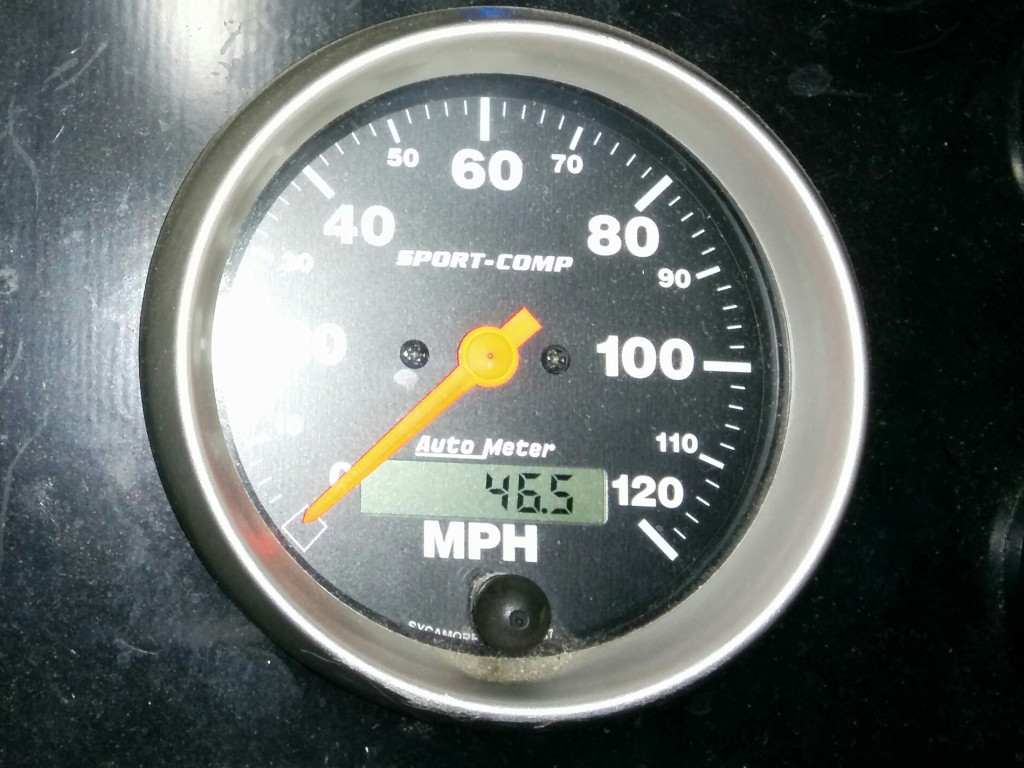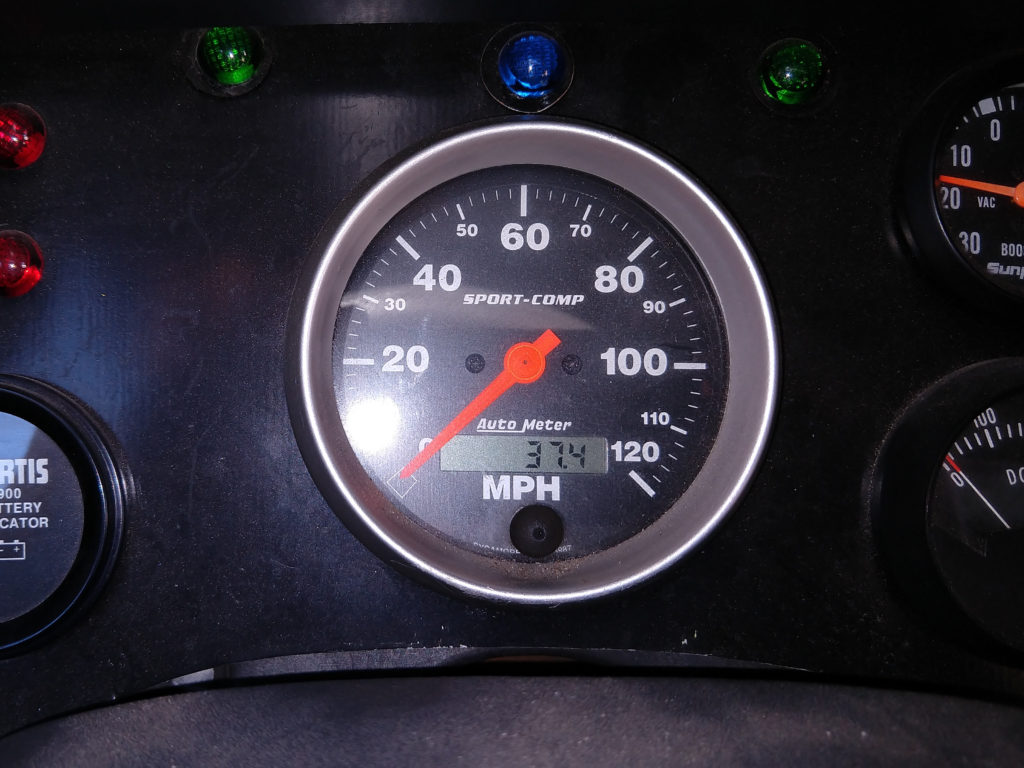I’ve been running the numbers on building a small 1-2 person “motorcycle” (3 wheeled) electric vehicle, and was considering adding two 330 watt solar panels to act as the hood and roof/sunshade, which would provide shade for the driver and charging from the sun.
The drive motor I was looking at runs at 96 volts and 95 amps to drive a 325 lb vehicle (with 170lb rider) at 60+ mph. Twelve Nissan leaf modules would provide 96-100 volts at 60 ah for a total storage capacity of 5.7 kWh (giving around a 45 mile range at 60mph, probably close to a 60 mile range at 35mph, an efficiency of between 83-111 Wh/mile). This battery pack would weigh 100 lbs, plus BMS/mounting hardware and wiring.
Weight Considerations
Two 330 watt solar panels mounted on the roof/hood would also weigh 100 lbs.This could conceivably be 30% or more of your vehicles weight budget.
With around 6 hours of good solar exposure a day, they would probably provide around 600 watts per hour, or 3.6 kWh of charge (a gain in driving range of between 32-44 per day). They could fully charge my hypothetical 5.7 kWh battery pack in two days.
More batteries?
The alternate way to spend this weight budget is to double the battery pack size. This would give a 11.5 kWh battery pack, giving 90-120 mile range from a single charge. A side benefit is that the extra 100lb of weight could be placed low to the ground, instead of up high on the roof of the vehicle, greatly improving performance on corners. (Also, the aerodynamic effects upon handling and range of adding a horizontal sail to the top of your vehicle must be considered….)
In my opinion, if you are regularly returning to a home charger, it is more practical to use extra weight allowance for batteries, as opposed to solar panels. Solar panels make the most sense when the vehicle is designed for non-round-trip applications, such as with an RV/Camper or road trip vehicle.
Bigger/Faster charger?
For an “in-town” vehicle, where J1772 (level 2) chargers are readily available, adding a high speed on-board charger (6.6kWh) would allow you to refill a small battery pack in under an hour, and would add less weight than commercial solar panels or extra batteries. Having an extra 15 lbs of charger instead of an extra 100 lbs of solar panels or batteries would lower your rolling resistance and increase your range and acceleration.
Specialized solar panels
Alternate solar panels (smaller RV style, or thin film flexible solar panels) would weigh slightly less, but the weight savings is not as impressive as you may think. A 330 watt “house style” panel weights 50 lbs, or 0.15 lb per watt. A 100 watt RV panel weights 15 lbs, or the same 0.15 lb per watt. A 72 watt PowerOak flexible panel weights 6.2 lbs, or 0.086 lbs per watt. This is a weight savings of almost 50%, but unfortunately they are much less efficient, so would need more surface area, something in short supply on a motorcycle class EV, plus they cost much more on a per-watt basis.
Custom Alternatives
If you wanted to take the time to fabricate your own solar panels out of individual cells as part of a fiberglass layup, you could conceivably make them weigh less and fit the contour of your vehicle better, possibly integrating them into your vehicles body. But if they are integrated into the skin of your vehicle you have to worry about solar heat gain. I think it would be better to have them mounted as a “shade” or “2nd skin” just above your vehicles main body with airflow channels between the two.
Cost Considerations
100 lb of 330 watt solar panels (two) cost around $500, while a 100 lb Li-Ion battery pack would cost about $1200-1500 (unless salvaged from a surplus battery pack). So the solar panels could cost less than a larger battery, but would require more work to integrate into the vehicle. A 1.5 to 2kWh charger would be fully adequate for a vehicle with a 5.7 kWh battery pack. You could even have only 110V charging (1kWh) and save the expense and complication of a J1772 inlet, while still being able to recharge a fully used battery pack in six hours. A minimal charger like the ELCON PFC1500 would cost $575. An Elcon PFC 5000 ( TCCH-84-50 ) could charge at 5 kW, giving a small EV an almost “QuickCharge” charging speeds for around $2000 with J1772 inlet/adapter.
Modular Vehicle
One option would be to mount several solar panels on a trailer (possibly with a 2nd battery pack, and even extra motors) to be used only on longer “road-trips”. It is possible that the trailer could have room to hold 4×8 sheet goods, and/or a sleeping compartment under the solar panels for road trips. If the solar panels could swing up, it could be used for transporting larger furniture or appliances. (Consideration would have to be given to adding a lower gear ratio to the tow vehicle, or including extra motors on the trailer itself for heavier loads.)



Hi jay,
I found through ev album that you are using two of the tsm2500 thunderstruck chargers for your ev. Just wondering if your happy with them and their configurability as I’m considering buying a dual unit for my ev. Hard to find any us er reviews of them.
Thanks, Reinier
Yes, I am generally happy with the paired TSM2500 chargers (which are just rebranded CH4100 chargers as far as I can tell), combined with the EVCC that controls them. You can read more about them here:
https://www.summet.com/blog/2016/01/03/thunderstruck-motors-dual-tms2500-evcc-charger-package/
I have had problems with overheating that required the addition of air ducts, so if you buy them you may want to include them in your water cooling loop (if you have one) or make sure they have very good airflow (much better than the 2″ of space specified by the manual).
https://www.summet.com/blog/2016/06/20/tsm2500-ch4100-chargers-overheating/